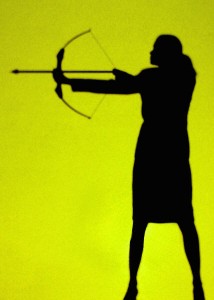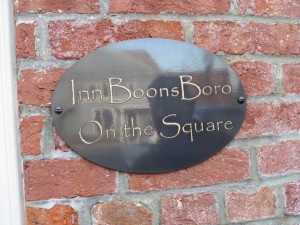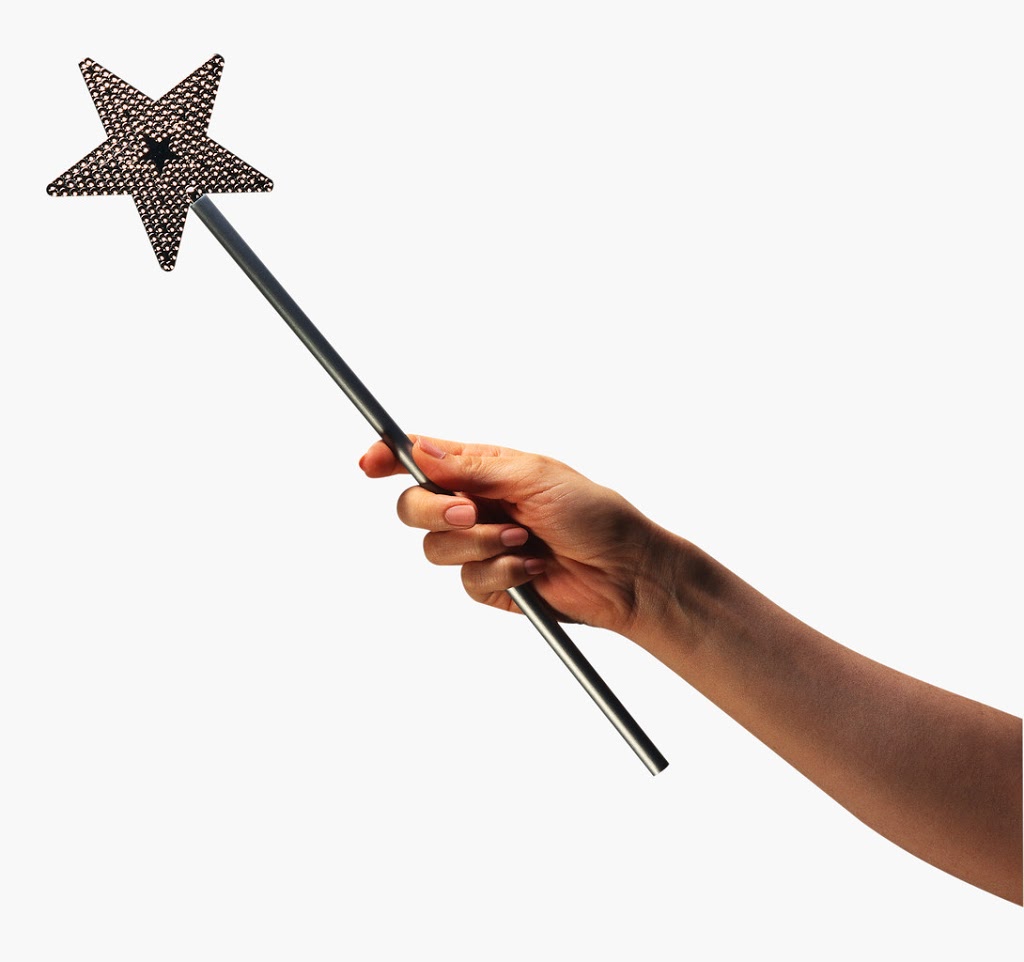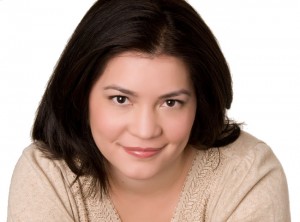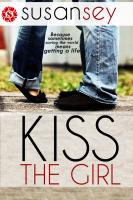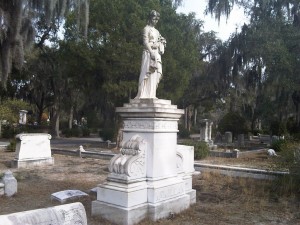Posted at Aug 1, 2013 3:25 pm
I’ll be presenting a workshop on Elevator Pitches at the Romancing the Lakes Road to Publication Conference. It will be Saturday August 3rd in Prior Lake, Minnesota. I’m looking forward to it! There are still registration slots open.
I’ve done this workshop a couple of times, the last time at the Golden Network conference in Anaheim. Always fun!
Be the First to Comment
Posted at Jun 14, 2013 12:20 am
I took a belly dancing class last week.
It was a fund raiser for Out on a Limb Dance Company. I’m on the board. But that’s not why I took the class. It was a fun get together.
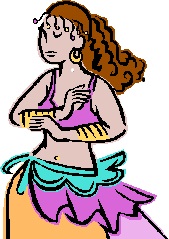 Picture a dozen women wearing sweatpants or yoga clothes. Two were in loose dresses. (Maybe not the best clothes for doing Downward-facing Dog.) We ranged from mid-twenties to mid-sixties and were all body types. We had coin-encrusted scarves wrapped around our hips, attempting to move them in figure eights. The three young women in their twenties who dance with the company made it look easy. But some of the class members really picked up the hip action. Picture a dozen women wearing sweatpants or yoga clothes. Two were in loose dresses. (Maybe not the best clothes for doing Downward-facing Dog.) We ranged from mid-twenties to mid-sixties and were all body types. We had coin-encrusted scarves wrapped around our hips, attempting to move them in figure eights. The three young women in their twenties who dance with the company made it look easy. But some of the class members really picked up the hip action.
Although I had taken belly dancing decades ago, that was when I was a fit college student. I still remembered some of the moves, but let me tell you, the body doesn’t always do what you want it to do.
The worst for me was snake arms. I don’t know if I was using my biceps, deltoids or triceps. But whatever the name of the muscle group on the top of my upper arm, by the end of the class it ached. And here I thought all that gardening and yoga planks would keep me in shape. That apparently works the forearms and not the upper arm.
We shimmied. At first we did slow hip pops, one with each beat of the music. Think hip twitches. Feet close together, knees bent, a controlled shaking of the booty. Then the pace picked up. The jingle of the coins on the scarves added texture to the eastern music playing. Finally the teacher had us shimmying as fast as we could shake it. The instructor insisted we shake everything that could jiggle, because we were glorious women. Shake the belly, the butt and those thighs. Now the coins were a steady ching-ching-ching filling the studio with bright sounds. (Almost covering our groans.)
We did a shimmy circle, walking and shimmying at the same time. Thanks goodness we weren’t also trying to chew gum. Our circle wasn’t round and our shimmies were offbeat, but our laughter was musical.
Since the class took place in a yoga studio (Tula Yoga and Wellness in Saint Paul) we cooled down with yoga breathing, shoulder stands and stretches.
After class, the woman who had donated the event hosted a wine and food hour. The food and wine were wonderful, but made even better by the graciousness of our hostess, Ann Blackburn and a community of women who celebrated being women.
Writing is such a solitary endeavor; I sometimes forget to get out of my office. Writing conferences provide that for me, but to be a well-rounded writer, I need to stay open to all sorts of stimuli. Even though my shoulders and lower back were aching the morning after, I’m so glad I went! And some heroine just may take a belly dancing class in my next book.
Be the First to Comment
Posted at May 19, 2013 3:14 pm
I love conference season. It’s a chance to escape my writing cave, meet other writers, learn my craft, pitch my books and just have fun. But more important, as an unpublished writer, a conference is a professional opportunity.
Here are my suggestions to make your next conference—work for you. A lot of these suggestions are geared for RWA, but can apply to the regional conferences.
Set conference goals: Are you trying to learn about a specific part of the craft of writing? Conflict has always been my nemesis; so I try and attend as many workshops on conflict as available. Do you have a specific publisher you want to write for? Attend the spotlights. They give advice on what they’re looking for in submissions. Check out workshops that give you critique opportunities like the opening pages or query letter reviews.
Meet new people: Don’t forget your business cards. I’ve made so many wonderful friends at conferences. This is my third time to the Golden Heart dance. This year I’ll meet a new set of Golden Heart sisters and see my Unsinkable and Starcatcher friends. Follow your new friends on Facebook or Twitter and support their successes.
Prepare your Pitch: If you’ve completed and polished your manuscript, prepare an elevator pitch. Just because you have an appointment with an agent or an editor doesn’t mean that will be your only contact with someone who is in the position to request your manuscript. An elevator pitch is your story setup in one of two sentences. Be able to deliver your pitch in a breath or two – no notes. If that’s a problem, print it on your business card.
Pick your targets: Research the editors and agents attending the conference and determine if your manuscript meets their submission requirements. Don’t forget, you can query beforethe conference. Your objective is to be published. That means finding the right fit for your manuscript and making sure you contact all possible outlets. Look at their pictures and be able to recognize the agent or editor in a crowd. Remember, this is a symbiotic relationship. They are there to find new authors; you are there to get an agent or publisher.
Make contact: If your previous queries have resulted in a request, notify the agent or editor that you will be at the conference and suggest a meeting. They may not have the time, but your email might net you a quick meeting or coffee, or even wonderful advice.
Put yourself out there: I’m an extrovert and even I have trouble pitching my work. But last year at RWA I came home with eight requests. I pitched in the bar, at a party, in a publishing house spotlight and of course the normal appointments. Don’t forget, you can camp in the appointment room and pick up extra appointments with your desired editor or agent. You are there to get your work requested.
Appointments: Make sure you’re prepared and have practiced. I plan for a three-minute pitch in a ten-minute appointment. It’s the elevator pitch with my hero and heroine’s GMC. Then they either have time for questions, or if they have requested your manuscript, you can ask questions. If the agent or editor doesn’t like the first manuscript and if you have others, pitch them. At one conference, I gave an agent an option of two different genre manuscripts. She wanted me to pitch both. I did—in six minutes. To my delight, she requested both.
Be Professional: Conferences are fun, but you’re working. A lot happens in the bar, but don’t get too loud, too drunk, or too … anything. And this means looking professional. Torn jeans and a dirty sweatshirt may not be the image you want to portray. Sure I write in my bathrobe, but that’s not my public persona. Carry yourself with confidence and people will respect you more. And maybe they’ll request a manuscript.
Because that’s what it’s about, someone requesting your work. Your perfect story will never sell, if it languishes in the bowels of your computer. (Or under the bed!)
There’s lots of competition for few publishing slots. Do everything you can to make sure that one of those slots is yours.
Now it’s your turn. What’s additional advice do you have?
Previously presented at the Ruby Slippered-Sisterhood Blog and MFW eMuse
Be the First to Comment
Posted at Apr 3, 2013 5:23 pm
Okay, not really. I slept at Inn BoonsBoro owned by Nora Roberts and her husband Bruce Wilder.
What a thrill. Walking into the Inn was like walking into a best friend’s house. I knew every room and furnishing. I knew about Luther’s railings and the names of the all the guest rooms. And I couldn’t wait to try out the bathrooms and heated towel racks. I knew about everything, even though I’ve never been to Boonsboro, Maryland.
How? Because I’ve spent hours with the Montgomery boys and their brides as they created an inn out of the oldest building in town.
I read it in Nora’s books.
 |
| Add caption |
Writing a book is about creating a world that readers want to visit and then come back to again and again. That’s what Nora has done. Her trilogy, Inn BoonsBoro, chronicles the renovation of the actual Inn by the fictional Montgomery men. I stepped off the pages and into the Inn and knew the features of each room as Ellen, the live-in innkeeper showed my husband and me around. The entry has a beautiful tile rug.
 Our room, Titania and Oberon, had a fabulous draped bed with cashmere throw and a huge copper tub along with a magic toilet. (Very strange to have a heated seat along with a dryer. Unfortunately, the bidet parts weren’t working.) Our porch overlooked Main Street, although I was disappointed that Liza, the ghost, didn’t show up. The books and video in out fairy bower of a room were—you guessed it—Midsummer’s Night’s Dream. Our room, Titania and Oberon, had a fabulous draped bed with cashmere throw and a huge copper tub along with a magic toilet. (Very strange to have a heated seat along with a dryer. Unfortunately, the bidet parts weren’t working.) Our porch overlooked Main Street, although I was disappointed that Liza, the ghost, didn’t show up. The books and video in out fairy bower of a room were—you guessed it—Midsummer’s Night’s Dream. 
Ever since I heard that the books were about an actual Inn, I wanted to go. The marketing concept and reach intrigued me. So I bid on a one night’s stay in the 2012 Brenda Novak Auction for Diabetes.
And the marketing isn’t limited to tying her books in with the Inn. Each room has a signature scent for infusers, soaps, and bath salts created by a local artisan. (T&O’s was pixie dust.) I was able to buy any of the Inn’s amenities and a mug over at Gifts Inn BoonsBoro.
The gift shop is across the street from the inn and next to Turn the Page bookstore and Café owned by Bruce Wilder. The bookstore was a busy place, but my favorite room, was the room filled—with Nora’s books.
There are two restaurants across from the Inn, both owned by Nora’s sons. Vesta, which appears in her books and is run by the heroine from The Last Boyfriend and Dan’s, which is MacT’s Restaurant and Tap in that same book. Don and I enjoyed dinner at Dan’s on our first night.
My husband had his hair cut by Dick who appears in all three books. Dick insisted we check out Crawford’s (also mentioned), where the sign indicated Restaurant, Guns and Ammo. (You really could get all three in the store.)
The artwork throughout the Inn is by local artists and available for purchase. The wine I drank during the social hour in the Lounge was local and carried an Inn BoonsBoro label. The tea was designated by each of the rooms. I ended up drinking Eve and Roarke’s Irish Breakfast. But my husband’s favorite amenity was the Jameson whiskey available in the Library.
In talking with the wonderful Inn staff, their pride in this incredible boutique hotel is evident. Not only has Nora rehabilitated a local eyesore, she has brought business to a small community (3,339), created opportunities for local artisans and linked everything to three wonderful books.
Before, she was my hero because of her outstanding books and career. Now, she’s allowed me the pleasure of walking through the pages of her stories.
Thanks Nora! We’ll be back.
9 Comments
Posted at Mar 5, 2013 2:37 am
 I love to read. I read everywhere. If I have a chance to sit or lie down, it will be with a book or eReader in hand. Taking a bath, eating breakfast, or finishing my word count for the day; all call for the reward of becoming immersed in someone else’s world. I love to read. I read everywhere. If I have a chance to sit or lie down, it will be with a book or eReader in hand. Taking a bath, eating breakfast, or finishing my word count for the day; all call for the reward of becoming immersed in someone else’s world.
If you read my last column, you’ll know that when I started writing, I was pretty clueless. (Hoping this has changed.) I wrote that first book and didn’t realize I’d written a love story. But after joining Midwest Fiction Writers (MFW), I thought I just might be a romance writer. And at a meeting, I first heard the refrain—Read Your Genre.
 I’d never read a romance. I was better than that, more intelligent than a woman who reads those books. I was a CFO who couldn’t be caught reading a bodice-ripper. I’d never read a romance. I was better than that, more intelligent than a woman who reads those books. I was a CFO who couldn’t be caught reading a bodice-ripper. But during my next trip to B Dalton, I bought my favorite sci-fis and thrillers and then snuck down to the Romance section and tucked some books under my favorite Ben Bova and Michael Crichton.
Thank goodness. I don’t know which book I picked up first, To Whitney, My Love or a Nora Roberts, but I fell in love.
I saw the light. I converted.
I bought backlists. (B&N second-hand book stores back then.) Found authors through anthologies. And read and read and read. And assumed that all authors did the same. To my surprise, I’ve talked to writers who don’t make the time.
Last year, during Susan Elizabeth Phillips’ address at the Spring Fling conference, she chastised writers to read. To paraphrase: “How can you expect to be writers, if you don’t read what’s being purchased by editors?” She clarified that her comment wasn’t insinuating that we should become mimics, but that we need to understand what was being published. And further, if we wanted to be best-selling authors, we needed to read best-selling authors.
I should note that Connie Brockway mention at an MFW meeting that she couldn’t read when she was writing because of the confusion of voices, but as a mother of 5 kids, I’ve always been able to segment life from work.
In a Mary Buckham Pacing class, her comments on reading went deeper. Read the genre you want to be published it, but don’t look to books published more than five years ago. Newer books reflect what the editors are currently buying.
I’ve taken their advice one step further. I try and read debut novels in my genre. Then I ask: what caught the editor’s eye? What distinguished this book from other manuscripts I’ve read in contests? What allowed this author to break down the barriers to publication?
So my humble advice? Don’t feel guilty when you read. I don’t. I’m just doing research.
Be the First to Comment
Posted at Jan 23, 2013 8:56 pm
Once upon a time, there was a clueless writer who loved telling stories, but didn’t know what she was doing. She wrote five hot-mess novels before realizing she needed to learn her craft. She meet some lovely fairy godmothers in the form of Kathy Eagle and Mary Bracho who guided her to the path of learning to be a novelist.
 And because the lovely fairy godmothers recommended it, the clueless writer joined the land of MFW where wonderful writers visit. She was intimidated by all the published writers at the meetings. (What the heck was a genre?) But she read and asked questions and started to understand their discussions. And she took on-line classes. And joy of joys, she joined critique groups and learned even more about writing. And because the lovely fairy godmothers recommended it, the clueless writer joined the land of MFW where wonderful writers visit. She was intimidated by all the published writers at the meetings. (What the heck was a genre?) But she read and asked questions and started to understand their discussions. And she took on-line classes. And joy of joys, she joined critique groups and learned even more about writing. The clueless writer entered contests sponsored by the great and powerful RWA chapters. And she began to final. So she entered more contests because it made her feel good. Finally the writer, no longer as clueless as she had been, entered the big one—the Golden Heart. Nothing happened the first year, but the second time she entered she got the call. She would be a princess for a week – a Golden Heart Finalist. And lots of her friends from the land of MFW were princesses that year, too.
The writer was still a little shocked because the book that finaled had only been in one other contest. She furiously revised the book and began querying agents. And she got requests! (Yippee.) And rejections. (Bummer.) And two of her princess friends from the land of MFW won the Golden Heart and became queens! (One in her category. Joy and bummer.)
But no one handed the writer a publishing contract. So she kept writing and revising and got lucky and finaled the next year with a different manuscript. She would be a princess for a week. Again. (Joy!) But she had to revise her manuscript before she sent out her queries. (So much work!)
She got an email from an evil agent. The evil agent requested a two-week exclusive on her book. And the writer was ecstatic and sent her a full manuscript. And heard nothing.
So right before the conference, the writer sent out more queries. And got her first phone call rejection from a lovely agent. And that didn’t sting quite so much because the lovely agent said she would like to see more of her work.
But then the writer ran into the evil agent during the conference and they talked. The evil agent got the writer excited because she seemed to understand where to take the writer’s career. The evil agent offered to represent her, promising to send her a contract after the conference. And then the evil agent wished her luck on winning the Golden Heart. (Which seemed odd to the writer, but maybe the wine had made the writer clueless again.)
 So the writer didn’t pitch her book to the editor she liked because she was going to be represented. She did hurry home and sent out all the agent requests she had gotten from the conference, because she still wasn’t officially represented. So the writer didn’t pitch her book to the editor she liked because she was going to be represented. She did hurry home and sent out all the agent requests she had gotten from the conference, because she still wasn’t officially represented. After the conference, the evil agent didn’t send a contract. She sent a letter rescinding the offer. And the writer was sad and embarrassed. And back to feeling clueless.
Then a good fairy agent, who had requested the writer’s manuscript at the ball (in the bar after the award’s ceremony) called to reject the writer. This was the second book she’d rejected. And they talked for a long time about what genre the writer should concentrate on. (And the writer now knew what that meant.) The good fairy agent didn’t want the writer to stop submitting manuscripts. So the writer sent her a third manuscript, which the good fairy agent also rejected with a kind letter.
The writer decided to rewrite another book. It finaled in a couple of contests and an editor requested a partial. By the next national conference, the writer had almost completed the rewrite, so she pitched that book. (And actually kind of stalked the good fairy agent. Thank goodness there aren’t stalking rules at the national conference.) Although she already had four editor/agent appointments, the writer worked hard and came home with eight different requests for three different books. And one of them was from the good fairy agent. (Who has always been on her A list.)
One evening, the good fairy agent called to talk about the fourth book that our no-longer- completely-clueless writer had submitted. And they talked and talked. The good fairy agent wanted to make sure that the writer would be okay if the book was submitted to e-publishers if the print world didn’t snatch up the book. And the good fairy agent waved her magic pen and offered the not-quite-clueless writer representation.
The writer, trying not to swoon, said yes, yes, yes.
And now the writer is represented by the good fairy agent. And she is still getting rejections. But she knows that it took her four books to convince the good fairy agent to work with her. (And the not-so-clueless writer was one of only 13 writers the good fairy agent signed in 2012.) So the writer knows that rejections can lead to good things. (Hopefully a publishing contract.)
The moral of this fairytale: If at first you get a rejection; submit. Again and again and again.
Nan is now represented by Laura Bradford. The Bradford Literary Agency.
5 Comments
Posted at Aug 7, 2012 9:37 pm
I’m thrilled I was the lucky winner on the Brenda NovakAuction for Diabetes of a four-month mentorship on self-publishing with Courtney Milan. (This year’s auction raised $320,000 for Diabetes research.) Courtney and I meet up in Anaheim at RWA’s national conference to begin the process.
A little bit about Courtney. She was a 2008 Golden Heart finalist in the Historical category and sold to Harlequin in a two-book deal at auction. She self-published her first novella, UNLOCKED which hit the USA and New York Times Bestsellers lists in June 2011. (I loved it!) Over the last few years, she’s been a self-publishing advocate. She has at least a dozen books out, both through traditional and self-publishing. A talented business woman, she’s currently working with a German translator on one of her books. This is unusual, since foreign rights are typically handled by agent or publishers.
We met in the Marriott restaurant of the Marriott and got to know each other over tea and breakfast. We both lamented the sad state of tea in the United States. (My mother was British, I believe her father is British.)
Since the manuscript I am thinking about self-publishing is still under review with editors, we’re not starting the clock on the mentorship, but I did learn a number of gems of successful self-publishing. Some of this was after the RWA annual meeting as Susan Sey, Courtney and I chatted about Susan’s self-published book KISS THE GIRL. (Great book!)
Reviews
Objective is to get a significant number of reviews in Goodreads and Amazon. Ten reviews looks like the reviews were all done by friends and family. So does twenty. Fifty is better – one hundred is awesome. But how do you accomplish this? One of the Courtney’s suggestions is to look at authors similar to your book or writing style. Then send the reviewers an email and ask if they would be willing to give an honestreview if you sent them a copy.
Social Media
Do what you enjoy doing. If it’s Twitter or Facebook or blogging, do it, but do it well. If you don’t like what you’re doing it will come across in you presentation.
I hope to keep updating this blog as my mentorship continues!
1 Comment
Posted at Jun 18, 2012 7:10 pm
This must be my day for rejections. Both rejections were nice, personal letters rejecting my work. (Have to remember they aren’t rejecting me—just my books.)
The first came earlier this morning. An agent who’d requested a full of SOUTHERN COMFORTS.
The positives — You create the setting beautifully and really bring the inn to life. Overall, this is a good read, but I’m not convinced that it will break out of the pack. I’m sorry to keep you waiting only to disappoint you. You have a lot of talent and have had a good bit of success.
The negatives – sometimes the characters came across as unsympathetic and the romance floundered.
TIME ELAPSED: Initial query to final rejection – 4 ½ months. Only 3 weeks after she received the full. And she apologized for the delay. That was nice.
The second rejection came this afternoon. An editor who had RESTORING MITCH’S HEART.
The positives — I like your writing, which is light, charming, capable of conveying warmth. The characters are appealing, too—especially Tierney and her dad. Even though this story isn’t working for us, I definitely think your writing has potential. I wish you all the best with it!
The negatives – Sharing the house may be too much of a forced conflict. Public proposal maybe too cliché. And the slight paranormal threw the editor off.
TIME ELSPASED: Initial submission to rejection – 12 ½ months, but she warned me it would be a long time. Back in February, I sent a revised partial because I’d made quite a few changes. She also apologized for the delay – very nicely.
The editor said she would be willing to look at it again if I revised. Sigh…
I am in the process of revising Mitch’s story, but not along the lines of her suggestion. It’s hard to know when to chuck a project, especially when you’ve spend so much time with the characters. When I look at my log, I think this is my fourth revision. A couple of revision passes were because I was actually learning my craft. (The first draft was definitely a head-hopping nightmare.)
I actually have this manuscript out to two other editors. We’ll see what happens.
Update on querying. This includes my contest requests and conference submissions.
|
Total Submitted Through Queries
|
|
13
|
|
Total Submitted Through Contests
|
1
|
|
Total Submitted through Conferences
|
6
|
|
|
|
|
20
|
|
|
|
|
|
|
Rejections
|
|
|
|
11
|
I should be querying more – but I keep submerging myself in revisions.
When do you give up on a manuscript?
2 Comments
Posted at Feb 3, 2012 6:20 pm
Last week I finished revising my 2011 Golden Heart manuscript. This was after 2 agents suggested revisions. Now I am on the great agent search. This year I’ve vowed not to give up. Here’s my approach.
I printed off RWA’s list of eligible agents. Since I love spreadsheets, I am building my own. I’ve included the following:
· Agency
· Agent name(s)
· Submission requirements
· Email submission address
· anticipated response time
· whether they take category romance
· Hyperlink to the agency website
I’m still surprised to find there are still agencies without a website.
I am also working between the agent’s website and Query Tracker. Query Tracker is a free database tracking queries to agents and publishers. Not only can you review statistics on reported querying results, you can also see who their clients are. Participants can leave comments on querying activity. You can dig up helpful information out of this database.
All of this takes time – but so did writing the book!
I researched 30 agencies and submitted to 10.
Week One results.
|
|
|
|
Requests
|
|
|
|
Submitted
|
Passed based on Query
|
Partial
|
Full
|
Request Action
|
|
Week 1
|
10
|
2
|
|
1
|
Passed
|
Does anyone have another approach? Let me know your ideas.
2 Comments
Posted at Feb 1, 2012 9:06 pm
When my husband and I decided to do a driving tour of the eastern half of the US, I took that trip as an opportunity to spend a little more time in Savannah. I have a book series set in Savannah. Even though the internet is a wealth of information, there is nothing like smelling and listening to a city’s rhythm to help authenticate a setting.
On a cold February day – cold for Savannah – not Minnesota, we spent 3 hours in Bonaventure Cemetery. The 160-acre Cemetery played a major role in John Berendt’s Midnight in the Garden Of Good and Evil. It was here that the narrator sipped martinis. Live oaks, draped with moss, line each road and shade the thousands of gravesites. According to our guide, there are over 40,000 bodies buried in Bonaventure.
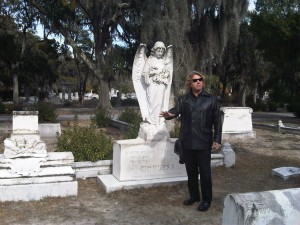 I could never imagine spending 3 hours wandering a cemetery but our tour was fascinating. We met Shannon Scott, owner and guide extraordinaire from Sixth Sense Savannah, near the Jewish gate of the cemetery. Shannon has been hanging around cemeteries all his life. One of his first jobs in the Midwest was a caretaker for an old cemetery. His tour talked about first hand ghost encounters, an intimacy with a number of the families and a dramatic flair that kept us wanting more. I could never imagine spending 3 hours wandering a cemetery but our tour was fascinating. We met Shannon Scott, owner and guide extraordinaire from Sixth Sense Savannah, near the Jewish gate of the cemetery. Shannon has been hanging around cemeteries all his life. One of his first jobs in the Midwest was a caretaker for an old cemetery. His tour talked about first hand ghost encounters, an intimacy with a number of the families and a dramatic flair that kept us wanting more.
The cemetery is set up in family plots. The plots are typically raised above the non-paved roadways. Some plots are well-maintained, others marked “do not maintain” have fallen into decay.
There are amazing sculptures on the most visited plots. John Walz moved to Savannah and became one of the leading sculptures. Little Gracie Watson is one of his finest pieces. Gracie, much beloved in Savannah, died of pneumonia at the age of six. A collection was taken up to create a monument for her grave and Walz created the sculpture from a photo in 1890. Shannon said that when the moon is full, people swear the statue actually feels warm. The grave is so popular with visitors, tours and ghost hunters; an iron fence has been added to secure the site.
 The Wilmington River adds a pastoral background to a number of the sites. A number of the plots have benches, and it was east to image Savannahians spending an afternoon wandering amongst the incredible monuments or picnicking at their favorite location. Perhaps, family coming to visit loved ones. The Wilmington River adds a pastoral background to a number of the sites. A number of the plots have benches, and it was east to image Savannahians spending an afternoon wandering amongst the incredible monuments or picnicking at their favorite location. Perhaps, family coming to visit loved ones.
Near the river is the burial site of a young woman who committed suicide. The family buried the young woman in the family plot, but her back is turned away from the family.
The three hours and the tour were well worth the blisters on my feet. The next time you are Savannah give Sixth Sense a call and enjoy a fact filled entertaining tour of history filled cemetery – Bonaventure – Good Fortune!
Be the First to Comment
|



